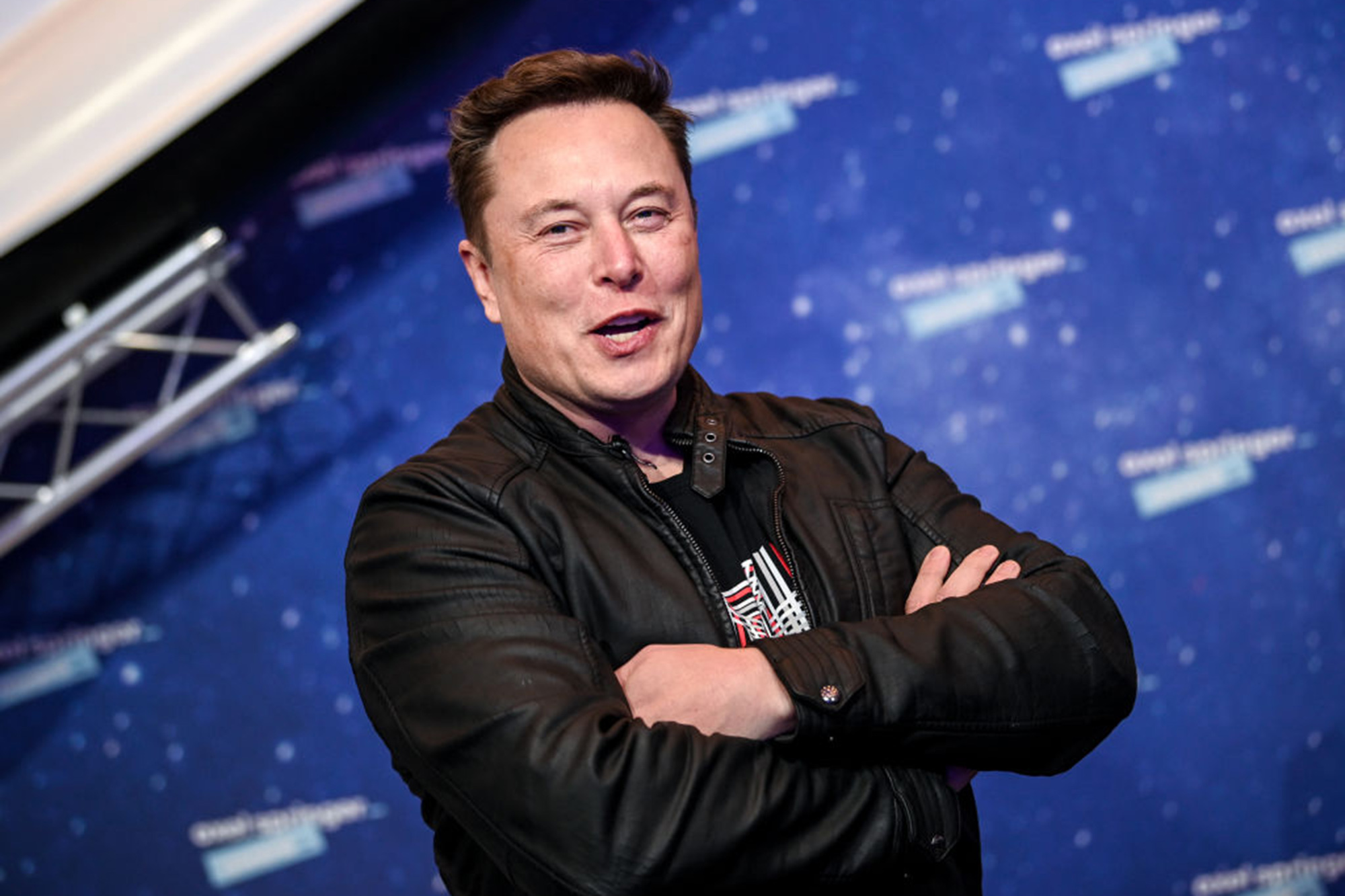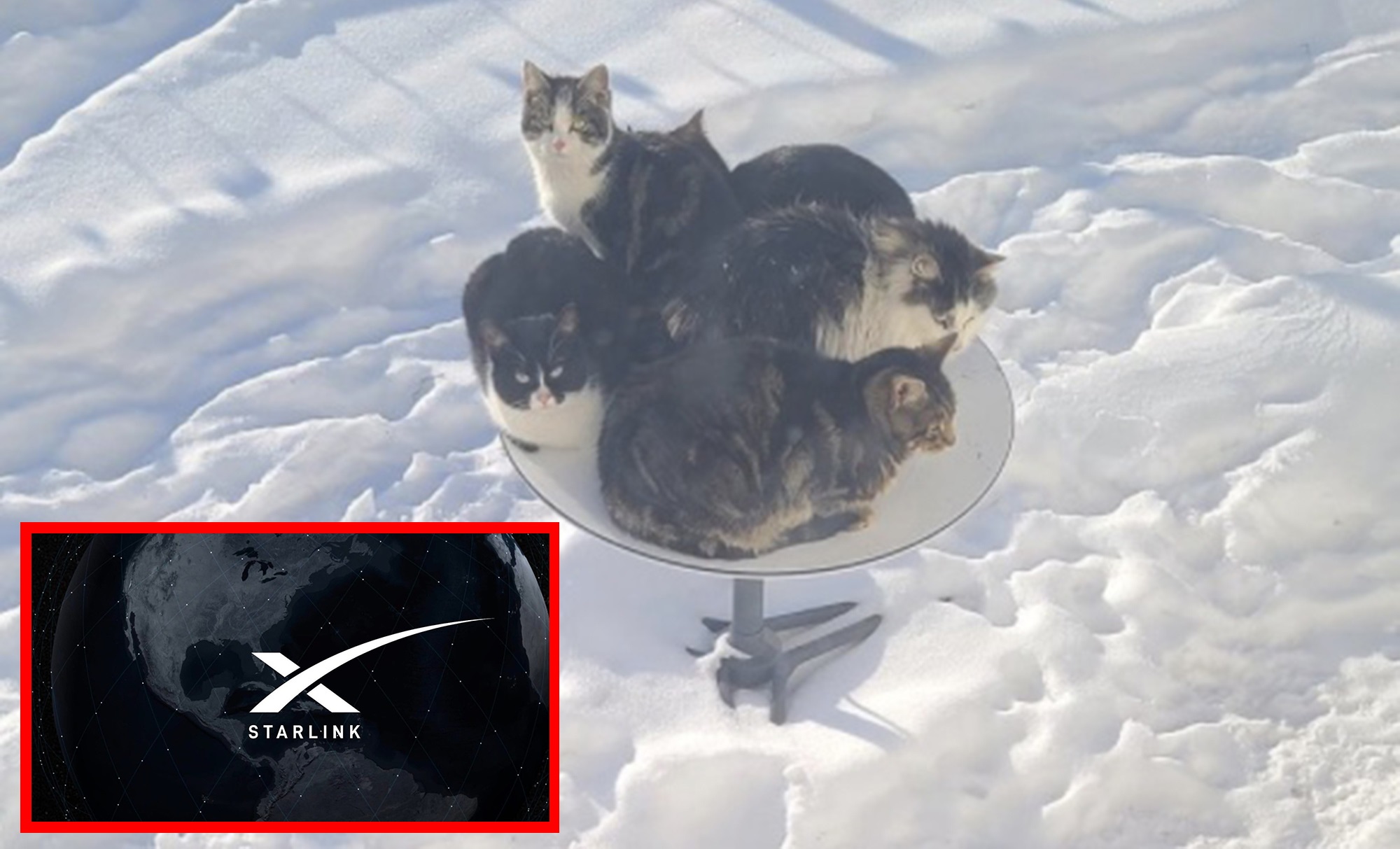Satellite dishes from Elon Musk’s Starlink network have received mixed reviews, although they are excellent at attracting cats.
Customers of SpaceX’s Starlink satellite broadband internet service have discovered an amusing feature: the satellites may be used as a cozy cat bed.
Since no one knows how many until the bough breaks on this cat cradle, it is a disturbing trend that Futurism has highlighted — most recently revealed by a Canadian Starlink user on Twitter, who saw no fewer than five felines resting onto his dish.
Aaron Taylor, from Alberta and Saskatchewan, Canada, commented on Jan. 31: “Starlink works fine until the cats figure out that the dish gives out a little heat on chilly days. More than 173,000 people have liked the cutely dystopian photo of almost a half-dozen cats cuddled up on a snowy satellite so far.
Starlink works great until the cats find out that the dish gives off a little heat on cold days. pic.twitter.com/uyH3Kbqrie
— Aaron Taylor (@Tippen22) December 31, 2021
“Cats on Starlinks?” was a discussion post in the r/Starlink subReddit where another customer mentioned the problem, noting that the behavior had surfaced elsewhere.
Fortunately, a well-respected colleague who was also a Starlink Beta tester had a thoughtful comment to share.

My thermal sight showed that my dish was heated from the bottom up, so I checked it out. So if it is installed on the ground, animals may be beneath or around it.
Activating the satellite prevents creatures like birds and rats from nesting in the satellite dishes, thus there is no possibility of a critter interrupting internet connection while the satellite is in operation, according to another expert.
Different species, same problem pic.twitter.com/OzG2bOoaWv
— Nico Thirion (@Nicothirion) January 1, 2022
Cats may be the least of tech tycoon Elon Musk’s concerns at the moment. When one of SpaceX’s orbiting satellites almost crashed with Beijing’s space station twice in July and October, Chinese state authorities called out Tesla creator Elon Musk and encouraged him to “act properly.”
As a part of an effort to provide an internet connection to rural corners of the world, SpaceX has launched over 2,000 tiny satellites into orbit. The internet is now being used by almost six out of ten individuals throughout the world, whether they are at their desk or on their mobile devices.
SpaceX’s first launch of 2022 will deploy more Starlink internet satellites
SpaceX intends to launch its next wave of Starlink internet satellites from NASA’s Kennedy Space Center aboard a Falcon 9 rocket on Thursday, kicking off its 2022 launch schedule.
The Falcon 9 rocket will travel southeast from the coast of Florida, just north of the Bahamas, to deploy the new set of internet satellites into low Earth orbit, a few hundred miles above Earth, in a departure from prior Starlink missions.
The Starlink 4-5 mission will aim for an orbital plane tilted 53.2 degrees to the equator, one of five orbital “shells” with varied inclination angles that SpaceX aims to fill with about 4,400 satellites to deliver high-speed, low-latency broadband access throughout the globe.
Previous SpaceX missions, which carried Starlink satellites to a comparable orbit, took out from Florida’s Space Coast. To avoid dumping trash on populous islands, launches to the southeast must fly around the Bahamas.
According to maritime warning warnings, the mission slated for Thursday will accomplish precisely that, following north of the Abaco Islands in the Atlantic Ocean before turning right to proceed more downrange.
The Falcon 9’s first stage booster will be landed on the drone ship “A Shortfall of Gravitas” in the Atlantic, according to SpaceX. Saturday, the landing platform left Port Canaveral towards the recovery zone.
The launch is set for 4:49 p.m. EST (2149 GMT) on Thursday, with a backup time of 6:47 p.m. EST available (2347 GMT).
Meanwhile, engineers at the nearby Cape Canaveral Space Force Station are prepping a Falcon 9 rocket to launch with scores of tiny satellites from the US and foreign clients no later than January 13th. Transporter 3 is SpaceX’s third dedicated rideshare launch, transporting smallsats into a sun-synchronous orbit.
The launch is scheduled for 10:25 a.m. EST (15:25 GMT) on Jan. 13, with the first stage landing on an onshore pad at Cape Canaveral.

Thursday’s flight will be SpaceX’s 34th dedicated launch of Starlink satellites. SpaceX has not explained why the Falcon 9 rocket would go to orbit in a southeasterly direction on its next mission, or how many Starlink satellites will be on board.
Dedicated Falcon 9 missions using SpaceX’s newest Starlink spacecraft have carried anywhere from 48 to 53 satellites per mission. So far, SpaceX has launched 1,944 Starlink satellites, with the next mission bringing the total close to 2,000.
However, not all of the satellites stay in orbit. Some have failed to reach orbit after launch, while SpaceX has de-orbited others on purpose, either because to technical issues or obsolescence when newer designs reach orbit.
As of Sunday, SpaceX has 1,468 satellites delivering Starlink internet connectivity, according to Jonathan McDowell, an astronomer and expert tracker of spaceflight activities.
Each of the flat-panel satellites weighs around a quarter tonne. The satellites will employ krypton-fueled ion engines to navigate into their functioning orbits at an altitude of 335 miles (540 kilometers), where they will join the rest of the Starlink fleet.
According to a commercial filing with the International Telecommunication Union, SpaceX has a long-term intention to launch as many as 42,000 Starlink satellites. The company’s primary priority is to deploy 4,400 satellites into the first five orbital shells.
Last month, Jonathan Hofeller, SpaceX’s vice president of Starlink and commercial sales, said that the Starlink network now serves customers in over 20 nations.
In a panel discussion at Euroconsult’s annual World Satellite Business Week event in Paris, he claimed, “We have well over 100,000 members, both on the consumer and business sides.” “And we have no intention of slowing down.” We are just getting started.”
SpaceX plans to utilize earnings from the Starlink business unit to help finance the heavy-lift Starship rocket’s development, which is a large completely reusable launcher that will ultimately replace the Falcon 9 and Falcon Heavy rockets.

